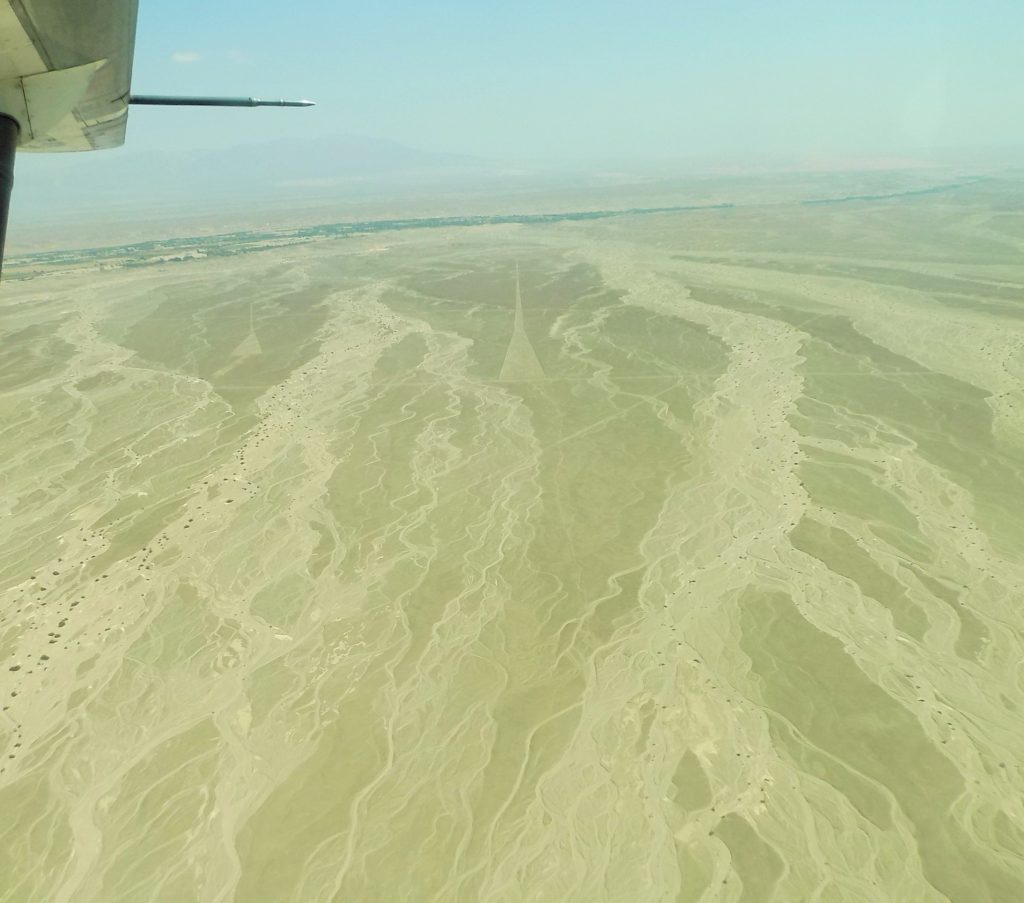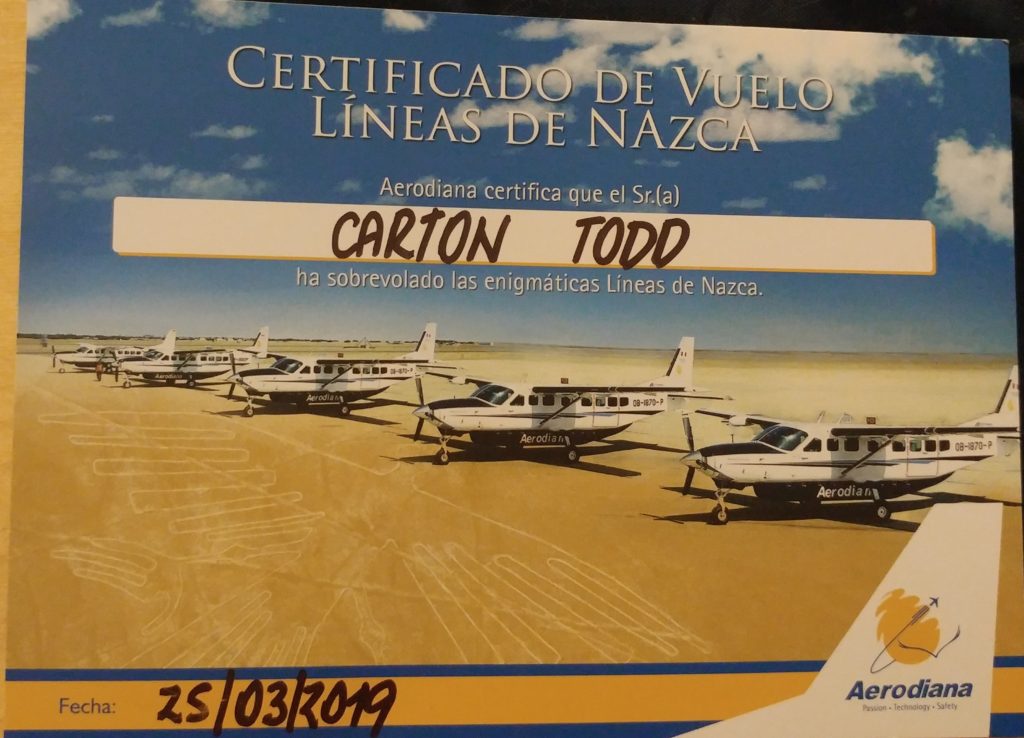Real alternative theories
By the mid-seventies, other researchers began questioning Reiche’s ideas and positing different explanations regarding the purpose of the lines. (Most serious researchers never took von Däniken particularly seriously.) One of the first and most resonant proposals came from Johan Reinhard, a National Geographic Explorer-in-Residence. His multidisciplinary approach detailed in his book The Nazca Lines: A New Perspective on Their Origin and Meanings led him to conclude, “It seems likely that most of the lines did not point at anything on the geographical or celestial horizon, but rather led to places where rituals were performed to obtain water and fertility of crops.”
As I noted in my first post about the Nazca, they were adept water managers but living in a region where annual rainfall is typically counted in minutes per year rather than in inches it also makes sense that rituals centered on water would have been a primary focus of their ceremonial lives.
According to Anthony Aveni, recipient of a National Geographic grant to study the lines, nowhere is their relationship to the importance of water more apparent than in one of the first designs we flew over – the Trapezoids. (If you don’t typically enlarge these photos, I suggest you do so with these. We didn’t have great contrast and, despite my best efforts to enhance them, the patterns are better seen in larger photos. A single mouse click on the photo is all that’s required.)
He wrote,
The trapezoids are big wide spaces where people can come in and out. Our discoveries clearly showed that the straight lines and trapezoids are related to water…not used to find water, but rather used in connection with rituals. The rituals were likely involved with the ancient need to propitiate or pay a debt to the gods…probably to plead for water.
Regarding the zoomorphs, Reinhard notes that animal symbolism was common to Andean cultures. Spiders are believed to be a sign of rain, hummingbirds are associated with fertility, and monkeys are found in the Amazon – an area with an abundance of water. He rightly concludes, “No single evaluation proves a theory about the lines, but the combination of archaeology, ethnohistory, and anthropology builds a solid case.”
On the other hand, there’s also evidence showing newer designs overlapping and ignoring older ones. This suggests not only a lack of long-term and unified planning but opens the possibility that they were made by different groups at different times and served more than a single purpose.
In the end, we are left to infer their use and purpose from incomplete evidence. Some small part of me (perhaps a remnant of my credulous teenage self) wants to believe that they served no utilitarian purpose and that these designs best seen and appreciated from above are works of art. Ars gratia artis.
It’s likely that in spite of our best efforts we will never know with certainty.
Not exactly the adventure I’d hoped for
Perhaps I should have paid closer attention to the warning Alejandro had given me at the bus station in Lima. Perhaps I shouldn’t have gotten out of my seat and leaned over Andreas, who had been assigned the seat next to mine, to get this “better” shot of the dog.
Or perhaps none of that would have changed what was about to happen.
The warning I got from Alejandro was that the flight over the Nazca Lines bounces about and makes you feel like popcorn. I thought his analogy was colorful but it didn’t concern me very much. You see, in my 64 years of flights, cruises, train rides, and the very occasional roller coaster I’d only suffered motion sickness once. That had happened more than 20 years ago on the first day of a cruise on a 49-passenger ship through Alaska’s inside passage on a day that the captain later told us was the roughest water he’d experienced in more than two decades of sailing those waters. I felt comfortably immune to the malady.
The first sign that this flight might be a bit more trouble than I expected came when we boarded the small plane to the faint smell of someone’s previous bout with airsickness and the insistence from the people assigned those seats that the crew do a better cleaning job.
The takeoff was loud and bumpy as was the half hour flight southeast from Pisco but it passed without a hint of trouble. It got a bit bumpier as we descended to get the best possible views of the lines but still wasn’t a problem. The pilot announced we were approaching the whale (which I missed) and turned first so the left side windows were nearly parallel with the ground. He followed that with a rapid turn to give the passengers on the right side their chance to see it. He’d repeat this for all 12 of the concentrated figures we’d overfly.
As you can tell from the photos above (which, as noted, I’ve enhanced to the best of my limited abilities) we had a bright day and not much contrast between most of the glyphs and the surrounding surface. This, I learned later, was the result of the strong El Niño that changed the rain pattern and resulted in less visible lines.
It was after I left my seat, leaned across Andreas to try and get a better shot of the dog, and caught sight of another passenger holding a bag to her face that I began to perspire and feel queasy. I held it together long enough to get a good picture of the spider
but then had to reach for the bag myself. Preoccupied with keeping my bile contained to the small plastic bag in front of me, I missed the next three figures barely recovering in time to see and photograph the hands. Here’s where you can see all the photos I retained from the day including those from the hotel’s museum.
I continued to sweat through the remainder of the flight and received a few soothing pats on my shoulder from Andreas who told me that he’d felt uncomfortable too. Obviously not to the same degree as I had.
Once back on the ground in Pisco all ten passengers received their flight certificate
though, given my reaction and all I missed, I’m not entirely convinced I deserved mine. As we returned to the hotel, my thoughts rather grimly turned to tomorrow’s excursion to the Ballestas Islands. Would my reaction to today’s flight be a mere anomaly or would I again react with unexpected discomfort? Time would tell but that is a story reserved for the upcoming posts.



